Photographs: Reuters Gaurav Dua, Head of Research, Sharekhan
In spite of the tough macro environment and the political compulsions before important state elections, Finance Minister Pranab Mukherjee has managed to announce a growth-oriented budget.
Though there are no big bang reforms, but in his speech the Finance Minister has hinted at taking progressive policy actions in the key areas of delivery of subsidies, attracting foreign direct investment, boosting resources mobilization of infra development, etc, during the course of the year. Overall, it is a budget that has exceeded expectations that were rather low anyways.
Budget will improve fiscal position
Image: Sensex will breach 21,000 levelPhotographs: Reuters Chokkalingam, ED and CIO, Centrum Wealth Management
We firmly believe that the Budget is positive for improving fiscal conditions, promoting economic growth and efficiency in the system and encouraging inflow of relatively more durable foreign capital.
It has also reiterated several visionary statements - hence, we believe that post-budget, there would be many concrete actions from the government, which would help the Sensex to get back to 21,000 level as early as possible in this calendar year.
We believe that the Budget attempts to address four core issues viz., strengthening the fiscal conditions, promoting growth and productivity and attracting relatively more durable foreign capital.
Improving fiscal conditions: While widening of service tax net along with robust growth of the service sector expected to increase service tax revenues by 18 per cent in FY12 over budget estimates of FY11, continued robust growth of overall economy and significant tax buyoncy are expected to grow gross tax revenues by about 25 per cent.
Consequent improvement in fiscal conditions (in terms of significant fall in both fiscal deficit and revenue deficit) would go a long way in improving the sentiments of foreign investors towards the domestic equity.
Growth-related measures: Increasing FIIs limit in infrastructure debt funds to $25 billion, attaining about 100 per cent growth (over previous five year plan) in XI Five Year Plan outlay, increasing infra spend by 23 per cent and aiming to increase farm credit by 23 per cent are certainly pro-growth measures.
Budget will improve fiscal position
Image: Durable FDI will be attractedPhotographs: Reuters
Attracting foreign capital: Proposal to allow foreign investments in equity schemes of mutual funds, increasing foreign investment limit in infra debt funds, firm policy guidelines for new banking licenses by March 2012 and decision to continue discussion on FDIs would improve the flow of relatively more durable foreign capital into the domestic economy.
Composition of foreign capital, which has been adversely impacted due to rising share of FII inflows is likely to change in more durable in nature due to these measures going forward.
Long-term visionary statements: Apart from concrete proposals, the budget also contains certain positive long-term plans like accelerating the share of industrial GDP in total GDP to 25 per cent from the current level of 16 per cent in next 10 years, improving agricultural productivity in the eastern part of the country, strengthening public debt management, etc.
In totality, we believe that this budget has taken and/or committed to favorable measures for faster economic growth, improved fiscal conditions & transparency in government administration, accelerating inflow of relatively more durable foreign capital and containing inflation.
Hence, we expect the domestic equity market to come out of current bearish sentiments soon and breach, for the third time, the Sensex level of 21,000 level in this calendar year itself.
The risk to our view would be any failure of monsoon and/or the problem in Libya spreading to other oil-producing countries.
Deficit target not easy to meet
Image: Fitch projects 8.5 per cent growthPhotographs: Reuters Art Woo, Director, Asia Sovereign Ratings - Fitch Ratings
Fitch is encouraged by the government's plans to stick to its fiscal deficit reduction path that was outlined in Thirteenth Finance Commission.
The government's fiscal deficit target of 4.6 per cent of GDP in FY2012, compared to an estimate of 5.1 per cent of GDP in FY2011, will not be necessarily easy to meet given the government will not have the benefit of one-off revenue proceeds from 3G and Broadband Wireless Access auctions as it did in FY2011.
Nevertheless, Fitch holds the view that the government is unlikely to stray too far off track given the broad base of revenue and expenditures measures announced, however, there is scope for disappointment if real GDP growth underperforms the official forecast of 8.75-9.25 per cent in FY2012.
Note Fitch is projecting 8.5 per cent FY2012.
Deficit target not easy to meet
Image: Borrowing plan looks promisingPhotographs: Reuters
The government's FY2012 Budget seem to strike an appropriating balance of dealing with inflation, particularly related to food security, social needs and promoting infrastructure investment, while maintaining its goal of fiscal consolidation. So overall, it's quite encouraging.
Today's budget announcement supports Fitch's current views of the Indian sovereign, which is a stable outlook on both the foreign currency and local-currency ratings at 'BBB-'.
More aid needed for Green Revolution
Image: Growth will come from digital infrastructurePhotographs: Reuters M.P. Vijay Kumar - CFO, Sify Technologies
The outlook on controlling fiscal deficit is quite positive. The references to need to strengthen agriculture sector, fiscal incentives for investment in cold chain, interest subsidy to farmers' and recommendations of APMC are quite encouraging, though I did expect more to aid a second Green Revolution, which is key to ensuring food supply levels and avoid the kind of inflation we are currently witnessing.
The next phase of growth has to happen only through digital infrastructure; some fiscal incentives should have come to this sector to enable penetration of broadband services to Tier2, 3 and 4 towns and also IT infrastructure.
More aid needed for Green Revolution
Image: Infrastructure expansion needs fundsPhotographs: Reuters
The MAT rate should have been brought down to at least 10 per cent to encourage investment of accrual in capital formation/employment creation, which is key in the long run.
Given current inflation levels, the increase of personal tax exemption limit will not even be noticed by many.
At least investment limits for investment in long-term infrastructure bonds could have been increased, which would have enabled some tax savings for individuals and availability of long-term funds to government to fund infrastructure expansion.
Budget has the right focus
Image: Budget focuses on food inflationPhotographs: Reuters Dinesh Thakkar - Chairman & MD, Angle Broking
In the Union Budget 2011-12, constraint is what was required on the expenditure side and by not having any major populist measures; the FM has managed to bring down the targeted fiscal deficit to 4.6 per cent, which should be achievable provided fuel prices are hiked.
Rightly focusing on pressing matters, measures to tackle high food inflation include viability gap funding will be provided for cold storage chains and increase in priority sector lending targets from Rs. 3.8-4.8 lakh crore.
Also, given the shortage of funds in the domestic banking sector, several measures are included to increase fund availability from other sources, pertinently FII investments in corporate bonds being increased to $40bn, withholding tax reduced, tax-free bond limits increased, etc.
Budget has the right focus
Image: Number of foreign banks will risePhotographs: Reuters
On governance, there seems to be a firm commitment to plug leakages (direct transfer of cash subsidy), reduce black money, tackle corruption, monitor performance of ministries as well as continue fiscal consolidation.
Without over-stretching itself, this Budget includes a decent set of measures without compromising on its fiscal deficit position and considering this, I would assign the Budget a rating of 7 out of 10.
Reasonably okay Budget
Image: Growth has kept pacePhotographs: Reuters Vivek Mahajan, Head-Research, Aditya Birla Money
Given the constraints in which the FM operated; the initial reaction has been that FM has managed to come out with a reasonably okay budget.
The Finance Minister has done a commendable job by bringing down the deficit to 4.6 per cent against a target set at 4.8 per cent last year.
The borrowing has been kept at Rs. 3.43 trillion against street expectation of over Rs. 4 trillion.
Reasonably okay Budget
Image: Food, fertiliser and fuel subsidy seems to be lowPhotographs: Reuters
While the divestment target has been retained at Rs. 400 billion, it seems to be realistic.
Biggest positive is bringing of the foreign money through MF route and increase in the corporate bond limit for the FIIs.
On the negative side the budget was silent on the reform process. Food, fertiliser and fuel subsidy seems to be low in light of the fact that food and fuel inflation remains elevated.
As such the fiscal deficit target at 4.6 per cent seems to be ambitious and FM has relied on tax buoyancy to bridge the fiscal gap and therefore the compliance and execution.
While sectoral impact of the budget may be limited, the overall budget is positive from the markets viewpoint and benefits the overall market.
No wonder the market reacted positively.

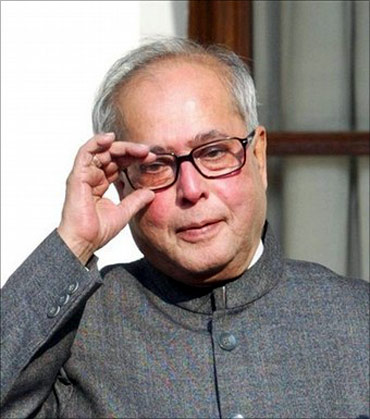


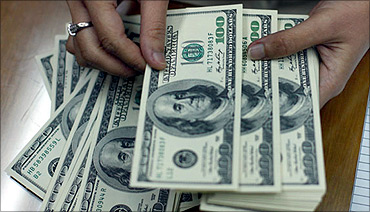
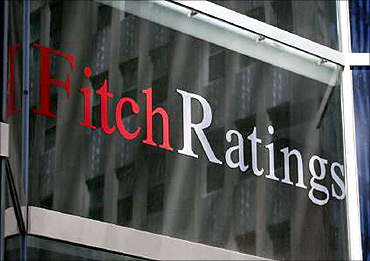
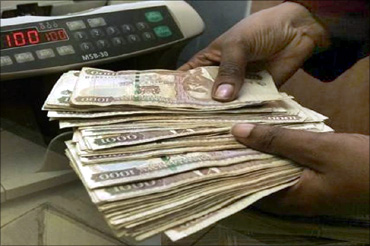

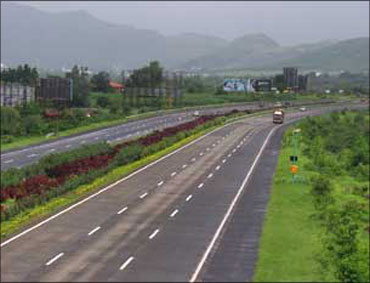


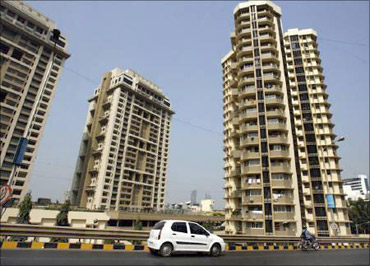

article